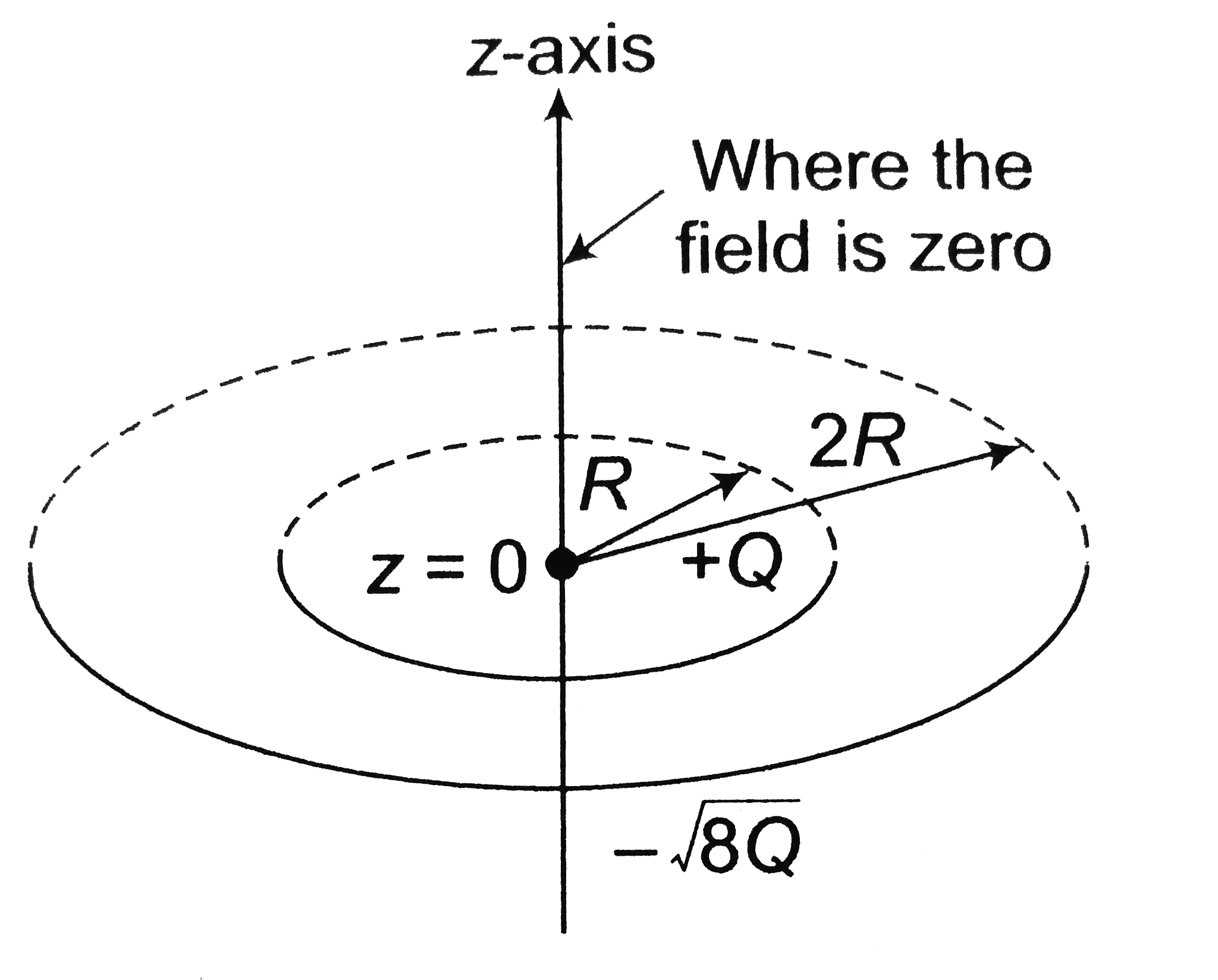Two concentric coplanar rings one of radius a and the other of radius 2a, have charges qa and qb respectively. A charged particle is in equilibrium on their common axis at a distance a from the common centre. Then the ratio qa/qb is
Step by step video & image solution for Two concentric coplanar rings one of radius a and the other of radius 2a, have charges qa and qb respectively. A charged particle is in equilibrium on their common axis at a distance a from the common centre. Then the ratio qa/qb is by Physics experts to help you in doubts & scoring excellent marks in Class 12 exams.
Updated on:21/07/2023Similar Questions
Two concentric rings, one of radius a and the other of radius b, have the charges +q, and −(2/5)−3/2q, respectively as shown in fig.

Find the ratio b/a if a charge particle placed on the axis at z =a is in equilibrium.
View SolutionTwo circular loops A and B of radii R and 4R are kept concentrically in the same plane. The loops carry currents I1 and I2 respectively. If the magnetic field at a point on the common axis of the loops at a distance 2R from their common centre is zero, the ratio I1I2 is _________.
View Solution
Knowledge Check
Two concentric rings, one of radius R and total charge +Q and second of radius 2R and total charge −√8Q, lie in x−y plane (i.e., z=0plane). The common centre of rings lies at origin and the common axis coincides with z-axis. The charge is uniformly distributed on both rings.
At what distance from origin is the net electric field on z-axis zero?
 AR2BR√2CR2√2D√2R
AR2BR√2CR2√2D√2RTwo soap bubbles, one of radius 50mm and the other of radius 80mm, are brought in contact so that they have a common interface. The radius of the curvature of the common interface is
A0.003mB0.133mC1.2mD8.9mA ring of radius a contains a charge q distributed uniformly over its length. Find the electric field at a point on the axis of the ring at a distance x from the centre.
Akq2x(a2+x2)32B2kq2x(a2+x2)32Ckq2x(a2+x2)32Dkq22x(a2+x2)32
Two co-axisal rings, each of radius R, are separated by a small distance l(ltltR) and carry charges q and -q.Find the electric potential and field at a point on the axis at a distance x from the midpoint between the rings,
View Solution.A thin disc of radius b=2a has a concentric hole of radius a' in it.It carries uniform charge density sigma on it.If the electric field on its axis at distance 'd' from the centre is given as 'nd' then value of 'n' is
View SolutionPotential on the axis of ring of radius 3R and at distance 4R from centre of ring is (charge on the ring is Q )
View SolutionA ring has radius 30cm and a charge of 2nC .The electric potential on the axis of the ring at a distance of 40cm from its centre will be
View SolutionA conducting sphere A of radius a ,with charge Q , is placed concentrically inside a conducting shell B of radius b . B is earthed. C is the common centre of the A and B
View Solution

